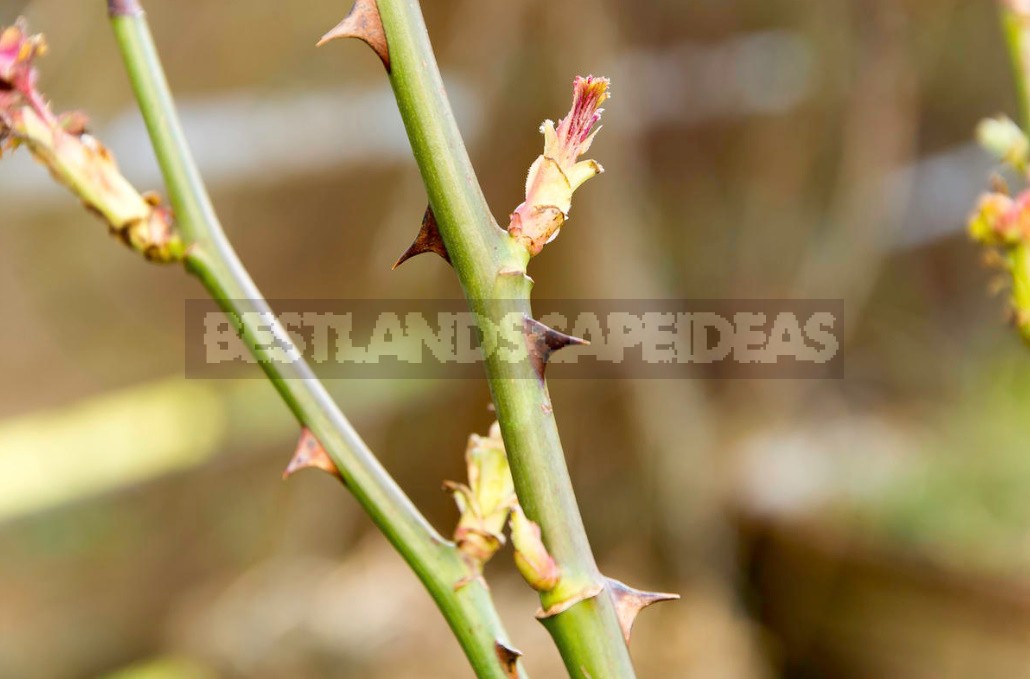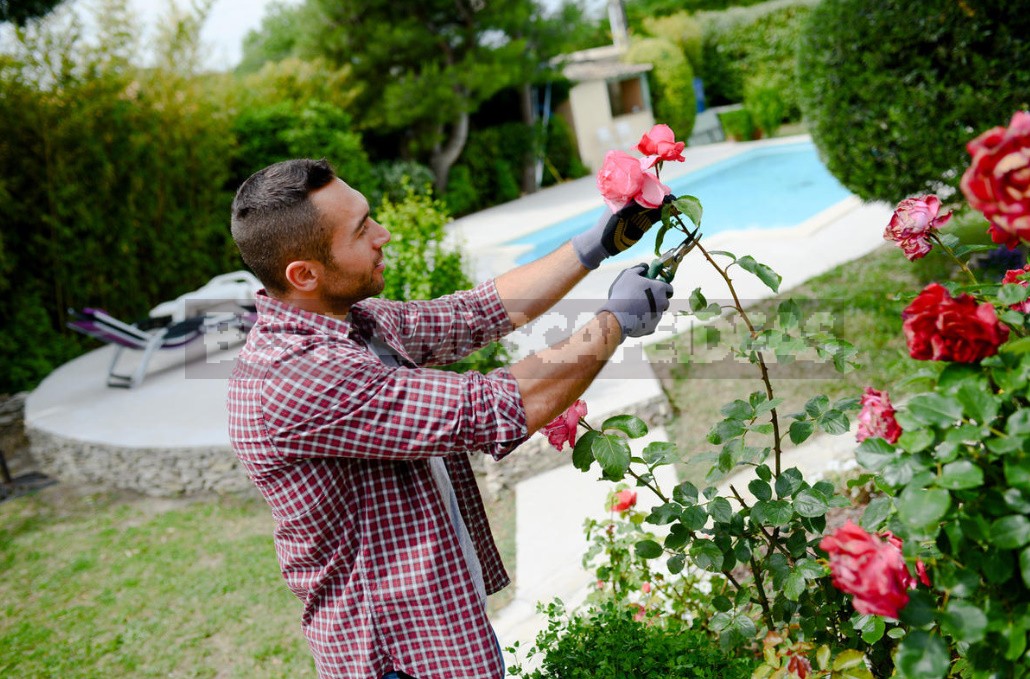To make the rose beautiful, it is cut in spring, summer and autumn. Pruning roses is necessary, first of all, for regular rejuvenation and health maintenance. With this procedure, they also achieve a good shape of the Bush, a lush and long-lasting flowering.
Many rose lovers find pruning a complex and mysterious process. But once you understand it, you will understand that there are no special difficulties here. To master the secrets of this important procedure, you need to stock up on a good tool, get acquainted with the principles of pruning common to all types of roses, and master the techniques.
Pruning tools
The necessary set of tools:
- pruners with sharp blades of two types – for cutting thick and young shoots;
- garden shears with long handles – for pruning in hard-to-reach places;
- reciprocating saw — for cutting very thick shoots and removal of old stumps;
- garden knife – for cleaning low-quality sections.

Basic General principles and techniques of pruning
Growth buds are located in the leaf axils. After leaf fall, they are clearly visible above the leaf scars. The higher the kidneys are located, the faster they germinate. At the bottom of the shoot are “dormant buds”, which, before sprouting, must go through several stages in their development. Pruning on immature buds delays the onset of flowering.

Pruning should allow airing of the crown and access of leaves and buds to light. If possible, cut off the outer buds and do not thicken the center of the Bush. If several shoots appear in the sinus of a single leaf, all but one must be removed at an early stage.
The cut should be smooth, without ragged edges, no closer than 0.5 cm from the kidney and with a slight slope from it.
Pruning should be carried out to a healthy (white) core. You can only work with a serviceable, clean and well-sharpened tool.
Start pruning all types of roses need to remove dead, diseased and frost-damaged stems, as well as thin and weak growth. This pruning is sometimes called sanitary, or thinning. To avoid the spread of diseases, the removed parts of the plant should be burned.
Crop types
They differ in the degree of shortening of shoots.

- Strong (short) crop
It is performed at the level of 2-4 buds from the base of shoots and is used, as a rule, during spring planting of seedlings, in the case of rejuvenation of old bushes or as a last chance for weakened bushes of tea-hybrid roses.
- Medium (moderate) crop
It is performed at the level of 5-7 buds, stimulates early flowering and provides maximum decorative effect.
- Weak (long) crop
It consists in a slight shortening of the shoots and is used as a summer pruning to remove faded inflorescences. For groundcover roses and some shrubs, this type of pruning is the main one, at least for a few years, after which a strong pruning may be needed to rejuvenate the Bush.
- Combined crop
Experienced rose growers often use various combinations of these types and achieve almost continuous flowering. Combined pruning is the best way to prolong the flowering of floribund roses.
The timing of pruning roses
According to the timing of the spring, summer and autumn pruning are distinguished. Spring pruning is the most important, it is sometimes called the main one. It is held annually, although the scale of it for different garden groups and even varieties within the same group may differ significantly. After the shelters are removed from the roses, sanitary pruning is carried out — only live shoots are left. With the beginning of Bud swelling, the main pruning is carried out, the volume of which depends on the age and condition of the Bush.

Summer pruning is carried out in a minimal volume; faded flowers and inflorescences are removed on the first developed Bud. Tea-hybrid roses are cut with part of the stem to the first real leaf. Timely removal of faded flowers prolongs the flowering period.
Autumn pruning is mainly associated with climate risks and shelter techniques. In a warm climate, roses do not need pruning in the fall, and in our conditions, almost all roses in one way or another require winter protection. It is necessary to remove the unripe parts of the shoots and shorten the roses to the height of the shelter. At the same time, it should be remembered that a strong pruning harms wattled large-flowered roses and powerful straight-growing scars, so when hiding them, they are bent to the ground.






